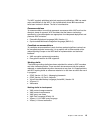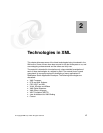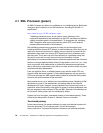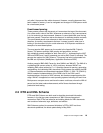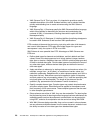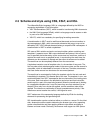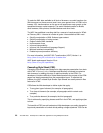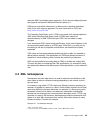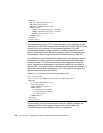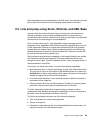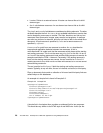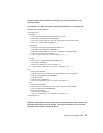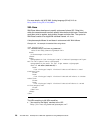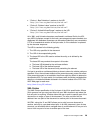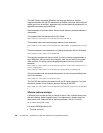
Chapter 2. Technologies in XML 23
used with XML if the display engine supports it. So far, the only shipping browser
that supports this feature is Microsoft Internet Explorer 5.0.
CSS can be used within a document, or referenced in a separate stylesheet,
which is the more common approach. For more information on CSS, see:
http://www.w3.org/TR/CSS1
The Cascading Style Sheet, Level 1 (CSS1) was made a full recommendation in
1996, while Cascading Style Sheet, Level 2 (CSS2) was made a full
recommendatory in 1998. CSS2 built upon CSS1, but had made no major
changes.
It can be said that CSS1 was a simple specification. It has a few limitations: It did
not say anything about tables on a HTML page. CSS2 did try to rectify this, by
introducing a new set of properties and behaviors, but these have not been
supported.
CSS1 does not incorporate absolute positioning within a table. It is possible to
define position relatively. The specification for CSS2 has devoted a number of
chapters for visual rendering, which includes the positioning of elements.
W3C has also published a working draft on CSS3 on its Web site in May 2001.
The main aim was to modularized the CSS specification. It is intended to clarify
the relationships between the different parts of the specification, and to reduce its
size.
2.4 XML namespaces
Namespaces are used when there is a need for elements and attributes of the
same name to take on a different meaning depending on the context in which
they are used.
For instance, a tag called <TITLE> takes on a different meaning, depending on
whether it is applied to a person or a book. If both entities (a person and a book)
need to be defined in the same document, for example, in a library entry which
associates a book with its author, we need some mechanism to distinguish
between the two and apply the correct semantic description to the <TITLE> tag
whenever it is used in the document. Namespaces provide the mechanism that
allows us to write XML documents which contain information relevant to many
software modules. Consider this example:
Example 2-1 A namespace example
<?xml version”1.0”?>
<library-entry xmlns:authr=”authors.dtd” xmlns:bk=”books.dtd”>



